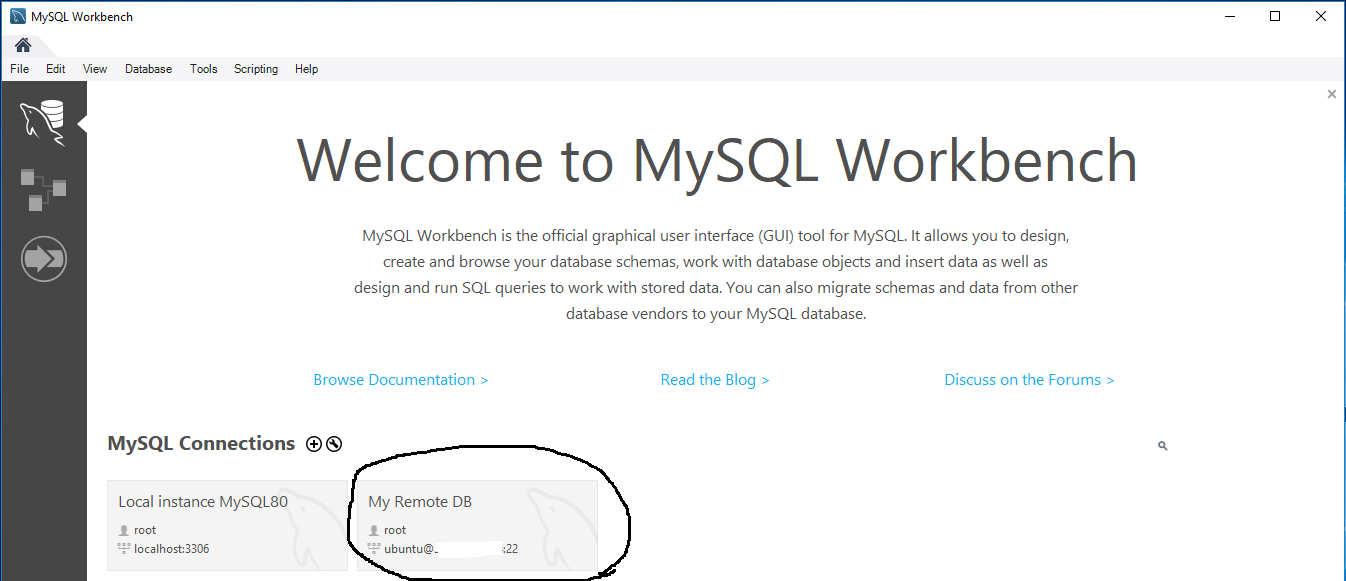
Mysql ssh tunnel download#
Download the 32/64-bit installer (most modern operating systems are 64-bit, so if you’re unsure, try this first). If you don’t already have PuTTY, you can download it at. Using PuTTY, we can create an SSH tunnel system-wide, so that you can connect to MySQL on localhost:3306, and this will will route the traffic to the server. While most MySQL clients support SSH tunnelling, some clients do not. SSH Tunnelling with Other Clients (Windows) ¶ If this is unsuccessful due to incorrect MySQL credentials, check the MySQL privileged to ensure that the user it correct and that the host is set to localhost. Click OK, and then OK again to save the configuration. This should return Successfully made the MySQL connection. If this is the first time connecting to the server, and you’re confident that the details you’ve entered are correct, click Yes. You may receive a prompt about the fingerprint not being recognised. Once you’ve entered all the above parameters, click Test Connection.
Mysql ssh tunnel password#
See MySQL - The Password Storage Vault for more information. When entering passwords, MySQL Workbench offers users the ability to store passwords in an encrypted Vault on the machine where it is running. As we’re connecting locally, it will need to be a user which has the host set to localhost. The MySQL user that you’re connecting as. This is the SSH password or the SSH key for your server.Īs we’re connecting via an SSH Tunnel, this will likely be 127.0.0.1. The username you use to SSH onto the server. With UKFast installations, the default SSH port is 2020. The IP address of the server you’re connecting to, followed by the port. Next to MySQL Connection, click the + button.īelow are the parameters you will need to fill in:Ī name for the connection that uniquely identifies the connection you’re making.

SSH Tunnelling with MySQL Workbench ¶ Creating a new connection ¶

This is extremely useful when connecting to services such as MySQL, and allows you to maintain the best practices of keep the MySQL port closed and MySQL bound to localhost only. The connection is secure as SSH connections are always encrypted, and when the tunnelled traffic arrives to the remote server, it will appear to the service as if the connection originated from localhost. It does this by listening on a network port on the client, and forwarding any traffic received on that port to a port on the remote server. SSH Tunnelling leverages an SSH connection to communicate with services on a remote server. In this guide, we’ll discuss how you can create an SSH tunnel to connect to MySQL remotely, without the need to set MySQL to listen publicly. This introduces an avoidable security risk. Many developers want to connect to their MySQL instances remotely, and to achieve this they change MySQL to listen publicly. By default, the service configured to only listen on localhost, meaning that it can only be accessed by processes running on the same server. MySQL is a common target of a wide range of attacks.


 0 kommentar(er)
0 kommentar(er)
